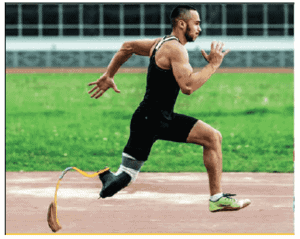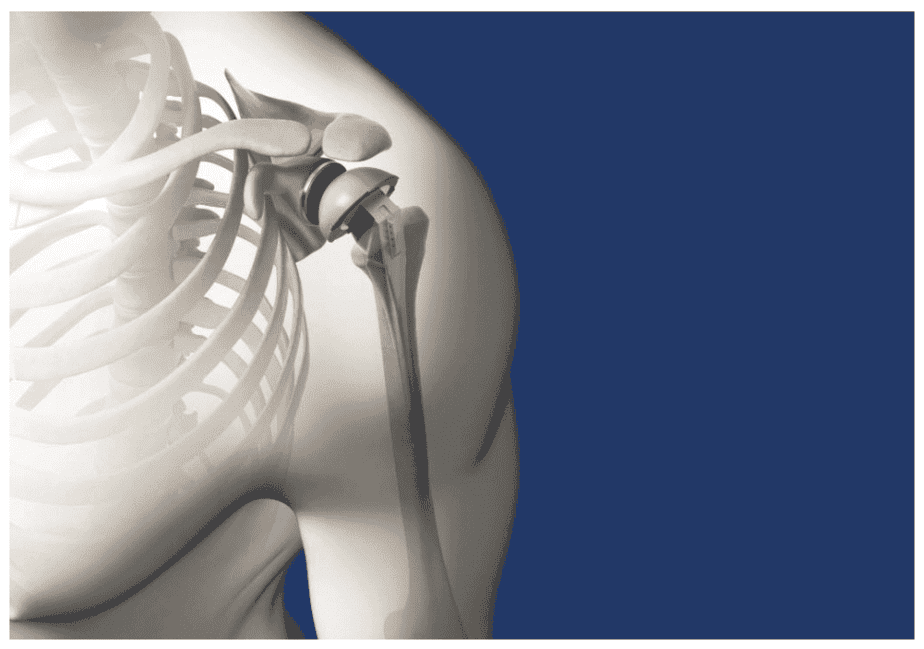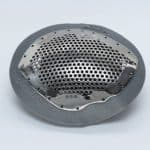Want to write a piece for 3DHEALS Expert Corner? Email us: info@3dheals.com
The medical device industry is at the peak of excitement for the opportunity that 3D printing technology brings in producing medical devices more efficiently and cost-effectively, particularly for personalized patient care. The excitement will be sustainable only if the industry can demonstrate the safety and reliability of such devices produced by 3D printing technology.
 The growth of 3D printing technology in the past two years was beyond the expectations of the industry and penetrated much deeper into many areas of health care. Over the years we have seen applications of 3D printing ranging from the fabrication of shells for hearing aids, dental aligners to metal implants for orthopedic care. Being a technology that can revolutionize medical device manufacturing the major focus was on improvising the technology to make it better with less attention to the issues that could arise in terms of quality and safety.
The growth of 3D printing technology in the past two years was beyond the expectations of the industry and penetrated much deeper into many areas of health care. Over the years we have seen applications of 3D printing ranging from the fabrication of shells for hearing aids, dental aligners to metal implants for orthopedic care. Being a technology that can revolutionize medical device manufacturing the major focus was on improvising the technology to make it better with less attention to the issues that could arise in terms of quality and safety.
Now, whoever owns a 3D printer can produce their own devices if they have a design file. Beyond the consideration of functionality, this raises serious concerns about the safety of such devices. As technology finds widespread applications and progresses towards serial production, monitoring, and control of the process and product is inevitable.
While we work with new cutting edge technologies it is equally important to make sure that product quality and patient safety is not compromised. This is a major challenge for both medical device manufacturers and regulators. Thought towards implementing regulations in 3D printed medical devices have been lingering for a while. Momentum was gaining due to rapid deployment of various 3D printing technologies and the complexity they could bring to the manufacturing process. However, no 3D printing “Regulation” is enforced in any major countries beyond the form of “guidance”; which is non-binding. Because of this, regulatory bodies started putting serious thought in developing regulatory frameworks that can ensure quality and safety for medical devices produced by 3D printing.
There are three notable initiatives underway in the regulatory landscape from the US FDA, Australian TGA and Chinese FDA with other regulatory bodies the following suit. Below is a brief overview of some of the key activities.
As a first mover, US FDA published the first guidance document for 3D printed medical devices on December 2017 titled “Technical Considerations for Additive Manufactured Medical Devices”, which is a “leapfrog” document reflecting FDA’s initial thoughts on this technology. This was followed by major initiatives from Australian TGA and Chinese FDA to develop guidelines specific to 3D printing which could ultimately translate into a regulation.
In order to accommodate the safety concerns raised by 3D printing, Australian TGA put out five proposals for regulatory changes:
-
- A tightening of the definition for the custom-made device and the introduction of some new definitions
-
- Changes to the custom-made device conformity assessment procedure
-
- Changes to the definition of manufacturer
-
- A new classification for anatomical models and digital 3D print files
- Regulating scaffolds that contain human origin material under the devices framework rather than the biologicals framework
The above proposals were opened for public consultation and ATGA received a total of 24 submissions from industry representatives, health care practitioners, government organizations, universities, and consumer representatives. The submissions from various stakeholders recognized the need for regulatory requirements in place but seek additional clarity prior to implementing regulatory change. Accordingly, TGA is escalating the concerns from the stakeholders to International Medical Device Regulators Forum (IMDRF) through chairing a workgroup in this topic.
Chinese FDA published their draft guidance on the regulatory requirement for approval of 3D printed medical devices in March 2018 after two and a half years of its formal approval for a 3D printed medical device. The draft is quite broad and covers orthopedic and dental applications, biomaterials and pharmaceuticals. Key proposals in the draft document include:
-
- Require validation testing for equipment and processes, as well as materials, software and final products.
-
- Environmental parameters: temperature, pressure, humidity, gas composition, printing speed, energy density, and related factors.
-
- Product validations should include usability tests, testing, and evaluation for functionality, anti-pull strength and fatigue tests.
-
- Clinicians and healthcare professionals should be involved in 3D printed device design input and output validations.
-
- Use of 3D printed medical implants should involve contracts between patients, manufacturers and healthcare providers.
- Must conduct cleaning processes; may not be outsourced given the complexity of 3D printed medical devices
The new medical device regulation for the European Union (MDR 2017/745) does not contain any clause pertaining to 3D printing other than the requirement of establishing a quality management system like the existing manufacturing techniques and adding more clarity on the definition of custom-made devices that can be applied to 3D printing.

Canadian medical device market regulator Health Canada plans to publish new draft guidance on Medical Device Licensing (MDL) for 3D printed devices in the near future. The new guidance will focus on MDL requirements for Class III and Class IV implantable devices manufactured according to ISO 13485 quality requirements. However, the new guidance will not cover issues such as standalone software, custom-made or patient-specific devices, or devices with biological components. The final guidance document is expected to publish in Spring 2019.
ANVISA, Brazil’s medical device regulator, proposed to establish a new regulatory framework dedicated to custom-made/patient-specific devices that will support the use of 3D printing technology. In this regard, ANVISA launched a public consultation in September 2018 to obtain feedback from relevant stakeholders.
Soon there will be enough clarity on the regulatory requirements as it is really important to push the boundaries of 3D printing applications in health care. US FDA recently announced its modernization plans for 510(K) pathway to drive technological innovation in medical device manufacturing. One of the proposals is to use newer or more recently cleared medical devices (less than 10 years) as predicate devices to demonstrate substantial equivalence. Organizations such as the Radiological Society of North America (RSNA) have been working closely with the US FDA to create guidance and benchmarks which can form the basis for future regulations. Other regulatory agencies will eventually follow the path to establish requirements for safe and compliant 3D printed medical devices in their geographic domains.
Regulations can either spur innovation or can hinder. It really depends on how you look at it.
About the Author

Khalid Rafi, Ph.D., is a lead development engineer at UL’s Global Additive Manufacturing Center of Excellence, UL International Singapore. He is one of the recognized metallurgists in the additive manufacturing industry. Dr. Rafi has been conducting research and development in additive manufacturing with a special focus on materials and process. He is also a master trainer for delivering UL’s additive manufacturing training programs. He has been engaged in standards development as a participating member in ISO TC261/ASTM F42, and Singapore Manufacturing Federation (SMF-SDO). He is also a member of Certification and Appeals Oversight Committee for Additive Manufacturing at Society of Manufacturing Engineers (SME), USA.
Dr. Rafi has written or co-authored over 40 technical papers, serves as a reviewer for international research journals, and speaks on topics related to his field.
Dr. Rafi holds a Masters and Ph.D. in Materials and Metallurgical Engineering, both from the Indian Institute of Technology, Madras (IIT M). He also completed postdoctoral studies in Additive Manufacturing at the University of Louisville, Kentucky, USA and Nanyang Technological University, Singapore.
Related Articles:
https://3dheals.com/3dheals-influencer-interview-dr-khalid-rafi-lead-development-engineer-at-ul/
Finalized, the FDA guidance document “Technical Considerations for Additive Manufactured Medical Devices”
https://3dheals.com/is-regulation-a-serious-hindrance-to-progress-in-healthcare-innovation/




 Jan 19, 2019
Jan 19, 2019 






Comments